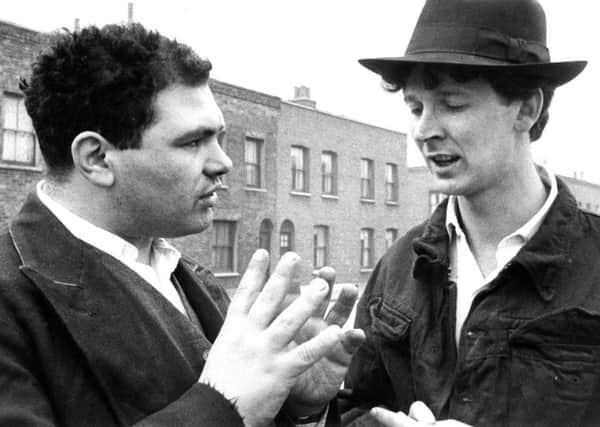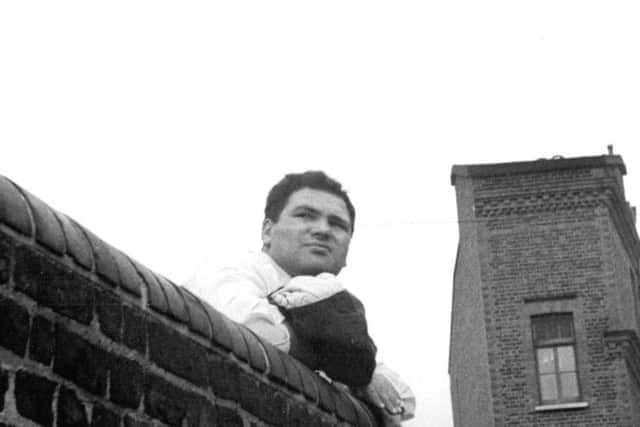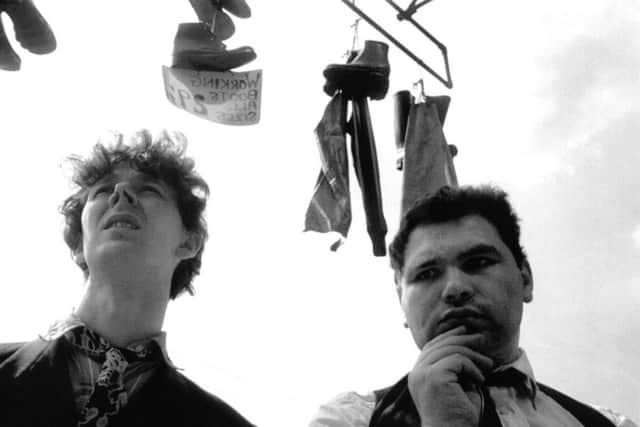Scots artist Eduardo Paolozzi's lost film to be shown in Bo'ness


But now Eduardo Paolozzi’s little-known past as an actor is set to be celebrated in his home country - more than half a century after he appeared on film.
A gala screening of his only screen role, as a mute docker working in London’s East End, is to be staged at Scotland’s annual celebration of silent film.
Advertisement
Hide AdAdvertisement
Hide AdMade after Leith-born Paolozzi had relocated from Paris to London, Together will be screened at Scotland’s oldest surviving cinema, the Hippodrome in Bo’ness, with a new live soundtrack as part of its annual “HippFest” event next month.


Paolozzi graduated from Edinburgh College of Art before moving to London to study at St Martin’s School of Art and Slade School of Fine Art before moving to Paris.
Paolozzi, who was an unknown artist at the time Together was made, was said to have modelled his role on Hollywood star Marlon Brando, who had shot to fame in A Streetcar Named Desire, On the Waterfront and Julius Caesar.
The other main character, another mute docker, was played by the painter Michael Andrews.
Like Paolozzi, he was a friend of Together’s Italian director Lorenza Mazzetti, a leading figure in the British “Free Cinema” movement in documentary-making in the 1950s.


Funded by the British Film Institute and shot in the summer of 1954, Together was featured on the BBC’s Panorama programme, went on to represent the UK at the Cannes Film Festival and had a five-week run at the Academy Cinema in London.
Musicians Christian Ferlaino and Raymond MacDonald have created a brand new score for the film for its screening on 23 March.
Advertisement
Hide AdAdvertisement
Hide AdThe Hippodrome programme is billing the film as “a refreshing and sometimes moving slice of everyday working-class life, the film follows two deaf-mute dockers in the midst of the wary, hearing community.”
The British Film Institute said the film was made by Mazzetti for less than £2000.


Its website states: “Together is set in London’s East End, with its bombsites, narrow streets, riversides, warehouses, markets and pubs.
“It follows two deaf-mute dockers who are completely cut-off from the outside world and are constantly pursued by groups of jeering children.
“Its modern depiction of everyday working-class life and its new approach to realism were inspired by Italian neo-realism and by the techniques used by Mazzetti’s Free Cinema friends.”
This year’s HippFest programme will also include a strand celebrating the largely-forgotten women of early cinema, when there were more of them working at every level of the industry than there are today.


Canadian actress and filmmaker Nell Shipman and Chinese superstar are Ruan Lingyu are among those featured in the festival programme, which will also feature a former Scottish Album of the Year winner, RM Hubbert, performing a new score to the Soviety film By The Law.
Advertisement
Hide AdAdvertisement
Hide AdAlison Strauss, director of the festival, which runs from 22-26 March, said: ““At HippFest we are all about making cinema special – engaging the best musicians to accompany rarely screened titles, presenting those films in beautiful and atmospheric settings, seeking out the best restorations from the world’s archives, and generating an atmosphere of inclusion and fun with our audience.
Since we established the Festival in 2011, more and more people are finding out that early cinema is not clunky and out-dated, but rather is fresh and relevant, sometimes even colourful and never actually ‘silent’.”